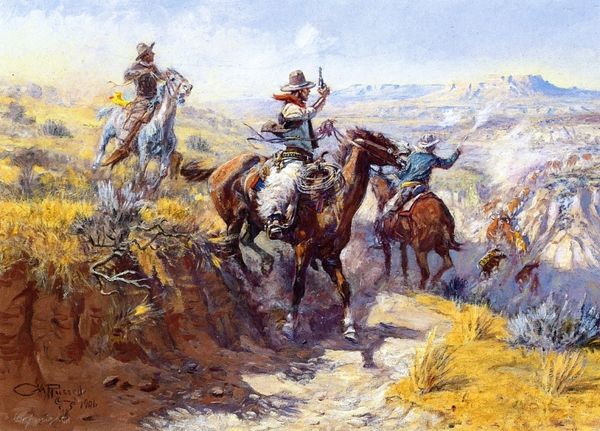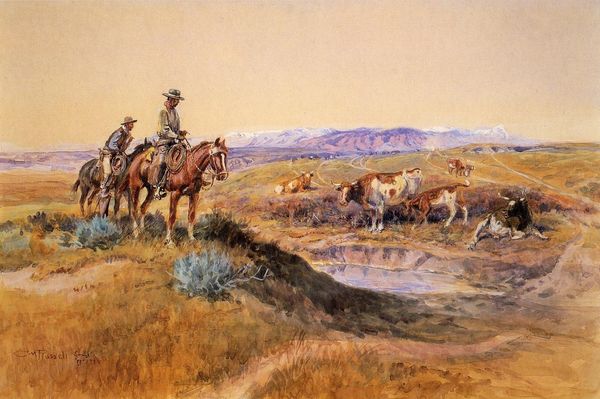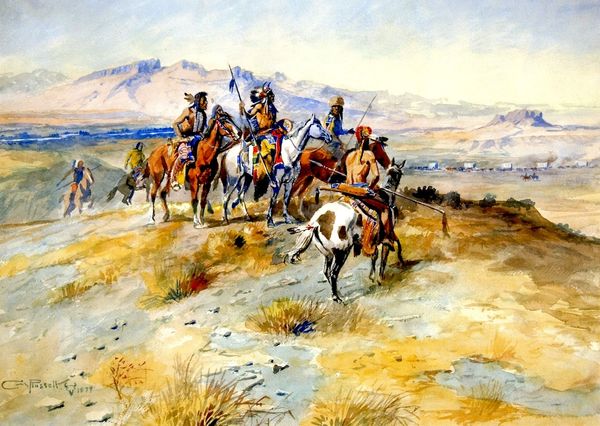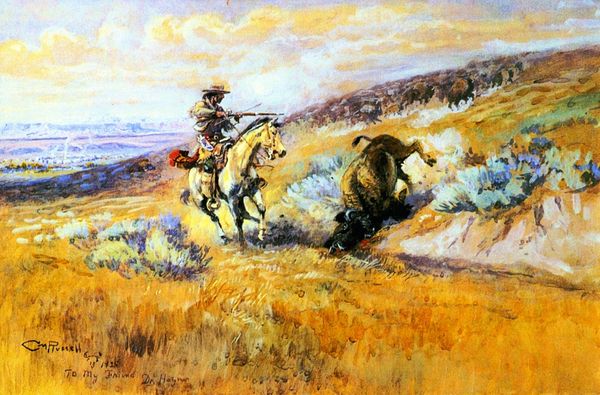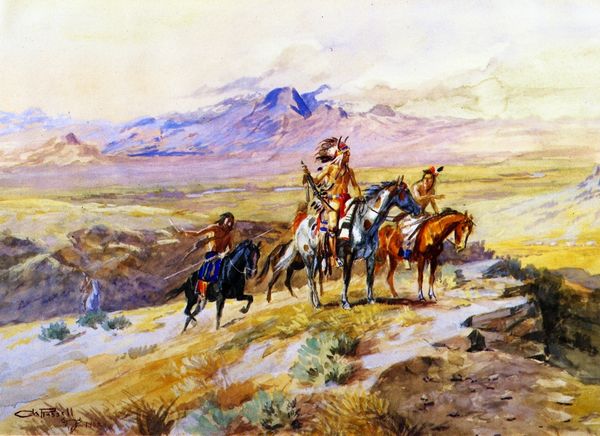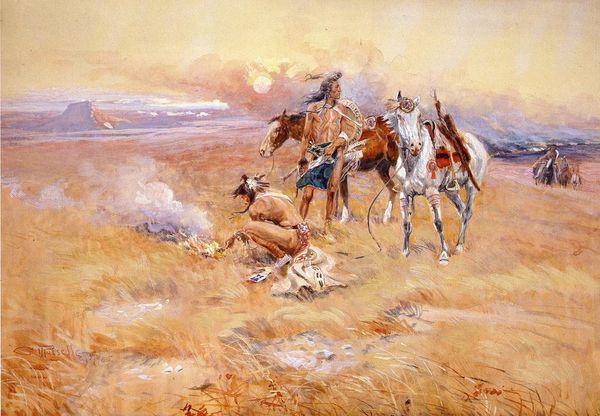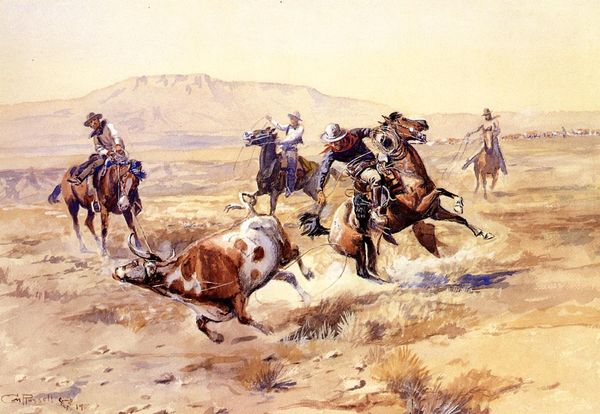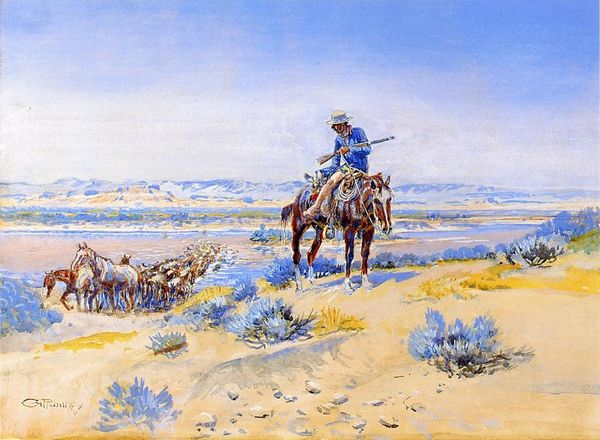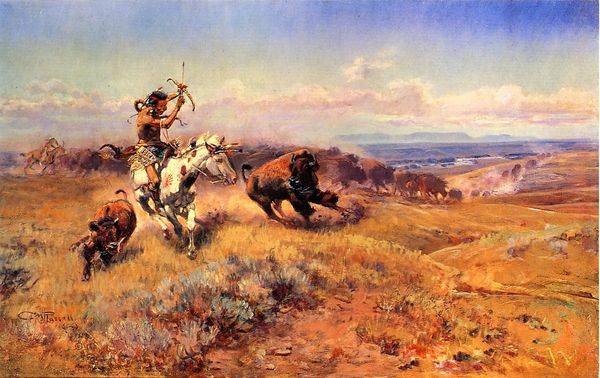
Copyright: Public domain
Curator: Charles M. Russell's 1936 oil painting, "When Cows Were Wild," offers a romantic vision of the American West, doesn't it? Editor: Indeed. Immediately, my eye is drawn to the composition, particularly the dynamic arrangement of forms across the canvas, from the implied diagonal of the hillside to the spirited motion of the figures. It possesses a palpable sense of energy. Curator: Absolutely. And what that energy reveals to me is not just a surface depiction of cowboys chasing cattle. It’s the embodiment of a transitional historical moment. The painting emerges from and perpetuates the myth of the cowboy as a free and powerful figure, essential in understanding the history and complex construction of masculinity within Western American culture. The painting depicts the process and impact of white, male colonial power and identity formation on this land and with native inhabitants. Editor: That's certainly a valid perspective. However, before we delve too deeply into broader socio-historical readings, I'm particularly interested in how Russell uses color and brushstroke to create a sense of depth and movement. Notice the juxtaposition of warm earth tones in the foreground against the cooler blues of the distant mountains. It creates a recession into space while simultaneously animating the scene. Curator: I cannot overlook that by presenting such scenes of open land as spaces without past claims or violence, there is erasure being visually enacted through the painting's idealized representation. These kinds of images were not, nor are, innocuous or neutral. They participate actively in creating national identity that serves the continued disenfranchisement of specific populations through land use and stories of settlement. Editor: Yes, but isn't there something to be said for the sheer painterly skill on display? The way the light reflects off the horses' coats, the texture of the grass...it’s more than just illustration; it possesses its own visual language that resonates independently. Curator: Well, perhaps this particular visual language acts as the syntax for conveying ideology about national identity, western expansion, and who gets remembered—and, more critically, who and what is forgotten—through iconic imagery. Editor: Fair enough. Still, examining the composition with intention has given me much to reflect on, socially. Curator: Likewise, seeing the technical aspects highlighted has enhanced my understanding of how potent image construction truly is.
Comments
No comments
Be the first to comment and join the conversation on the ultimate creative platform.

